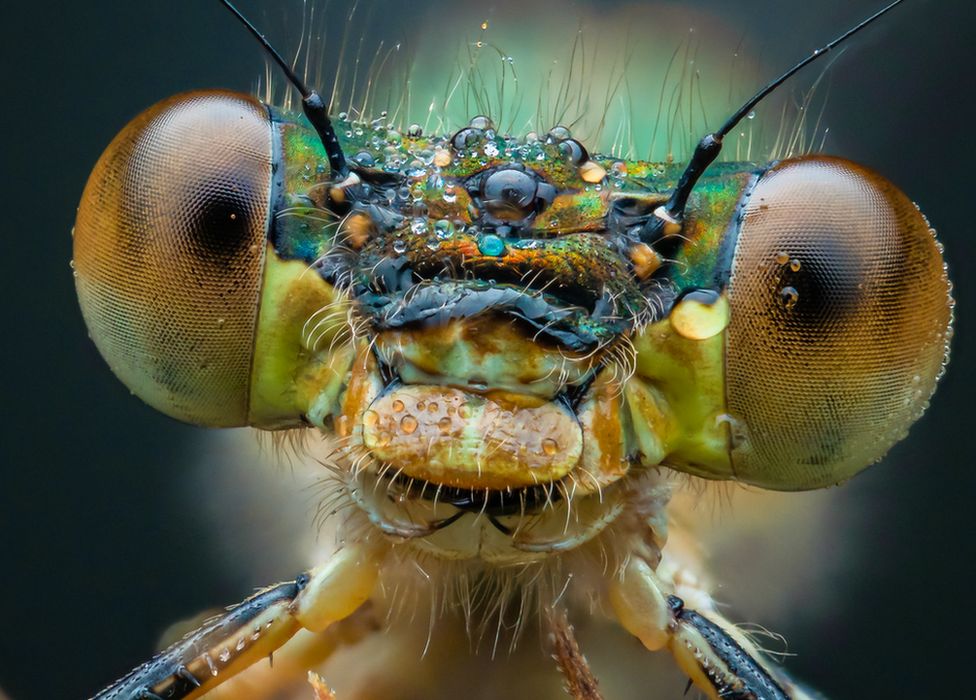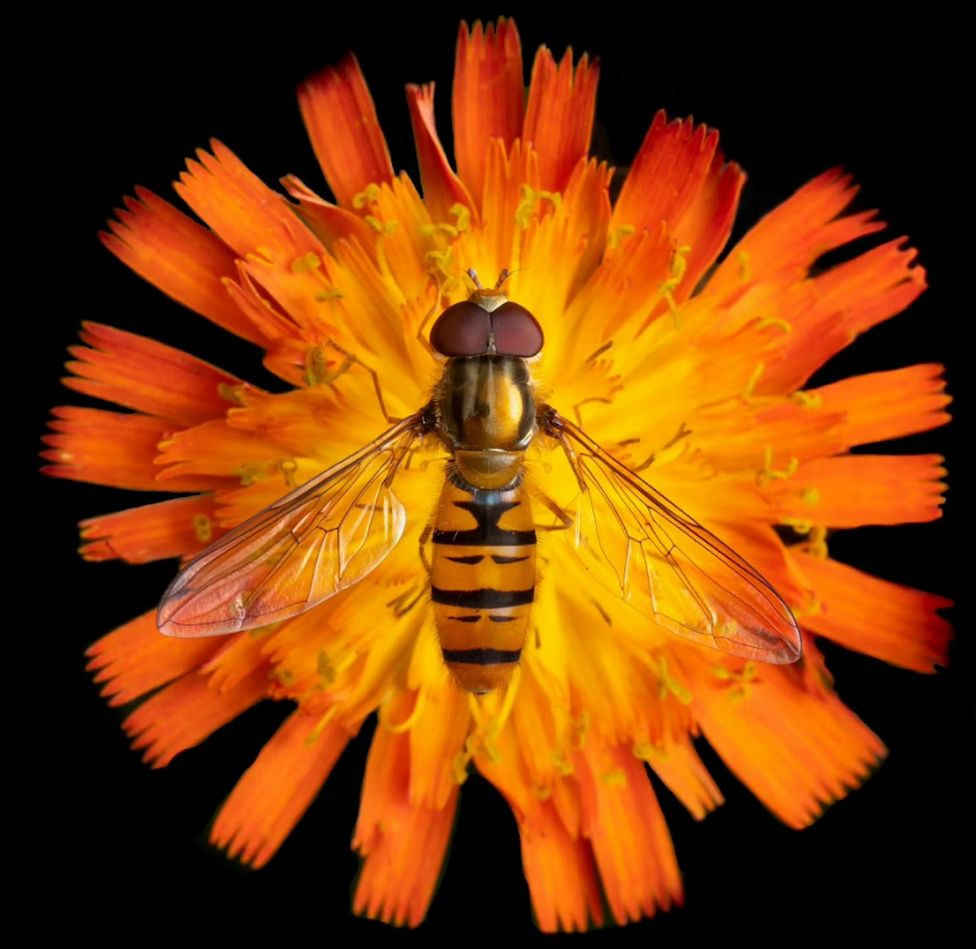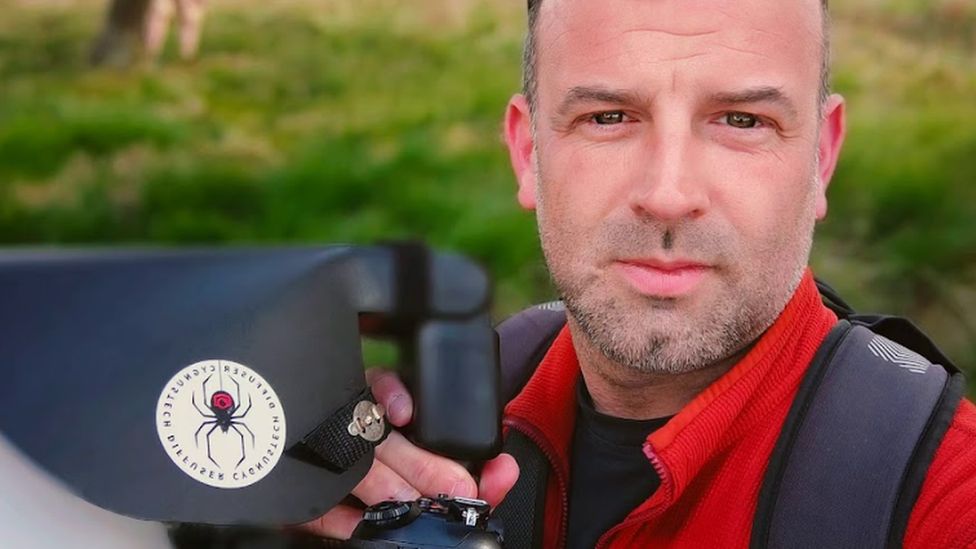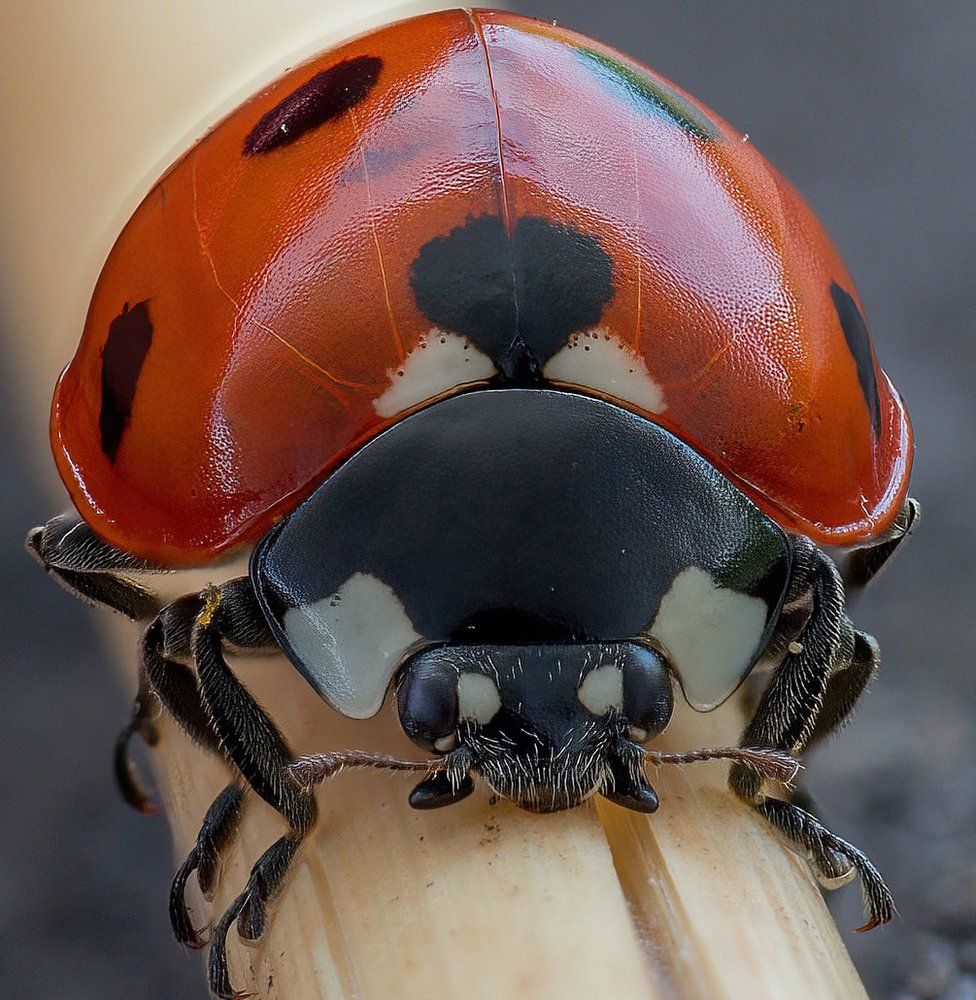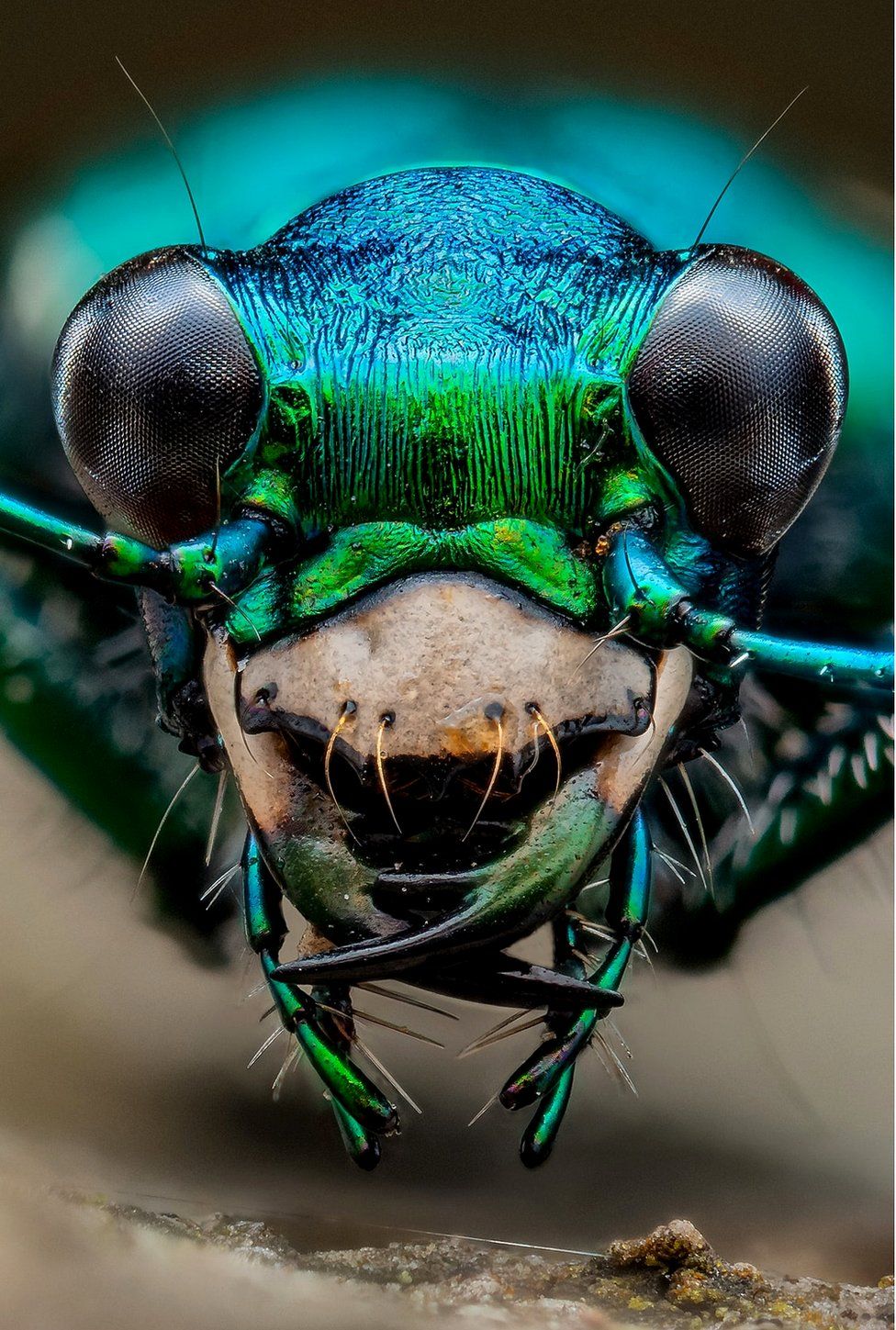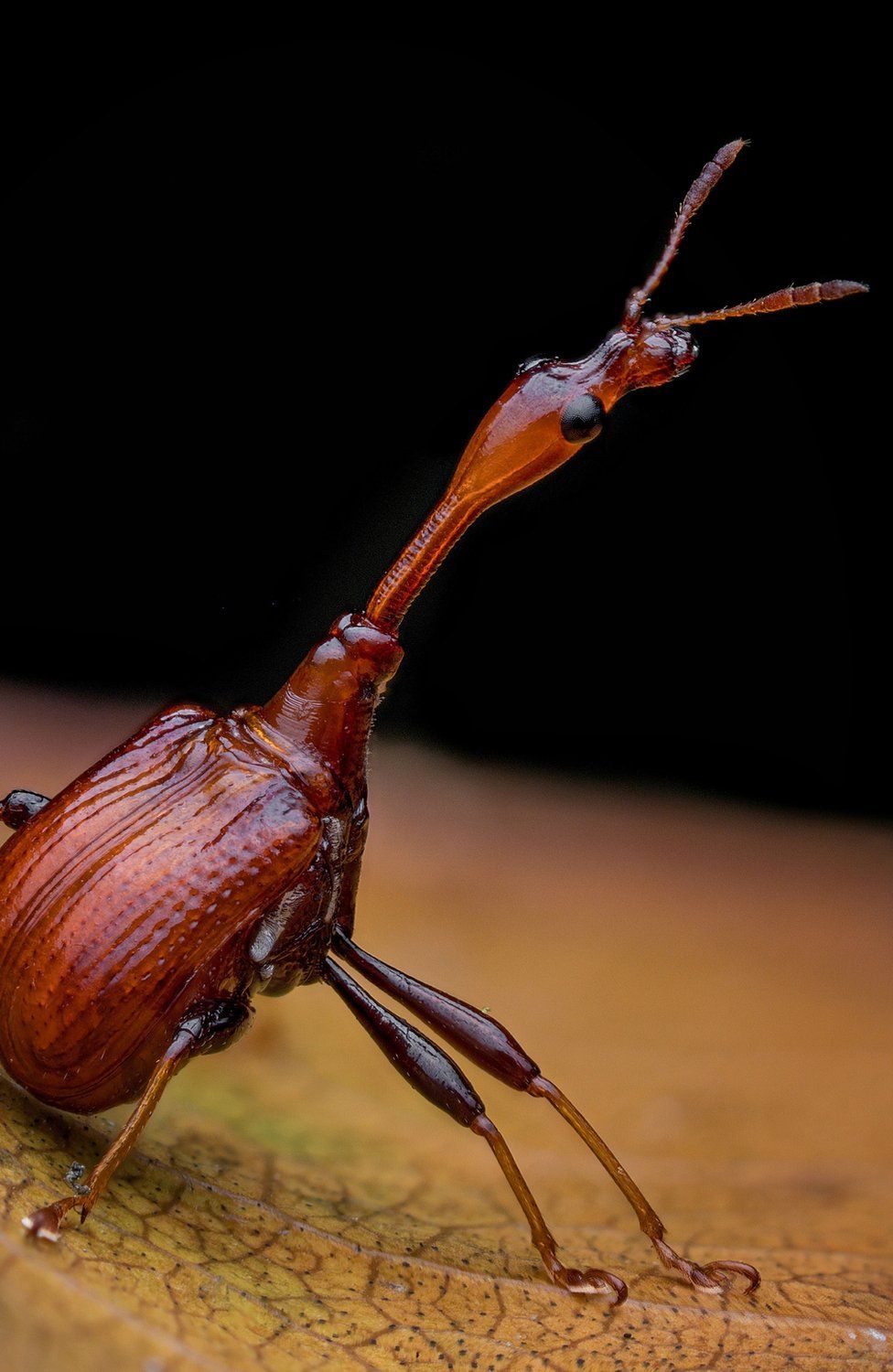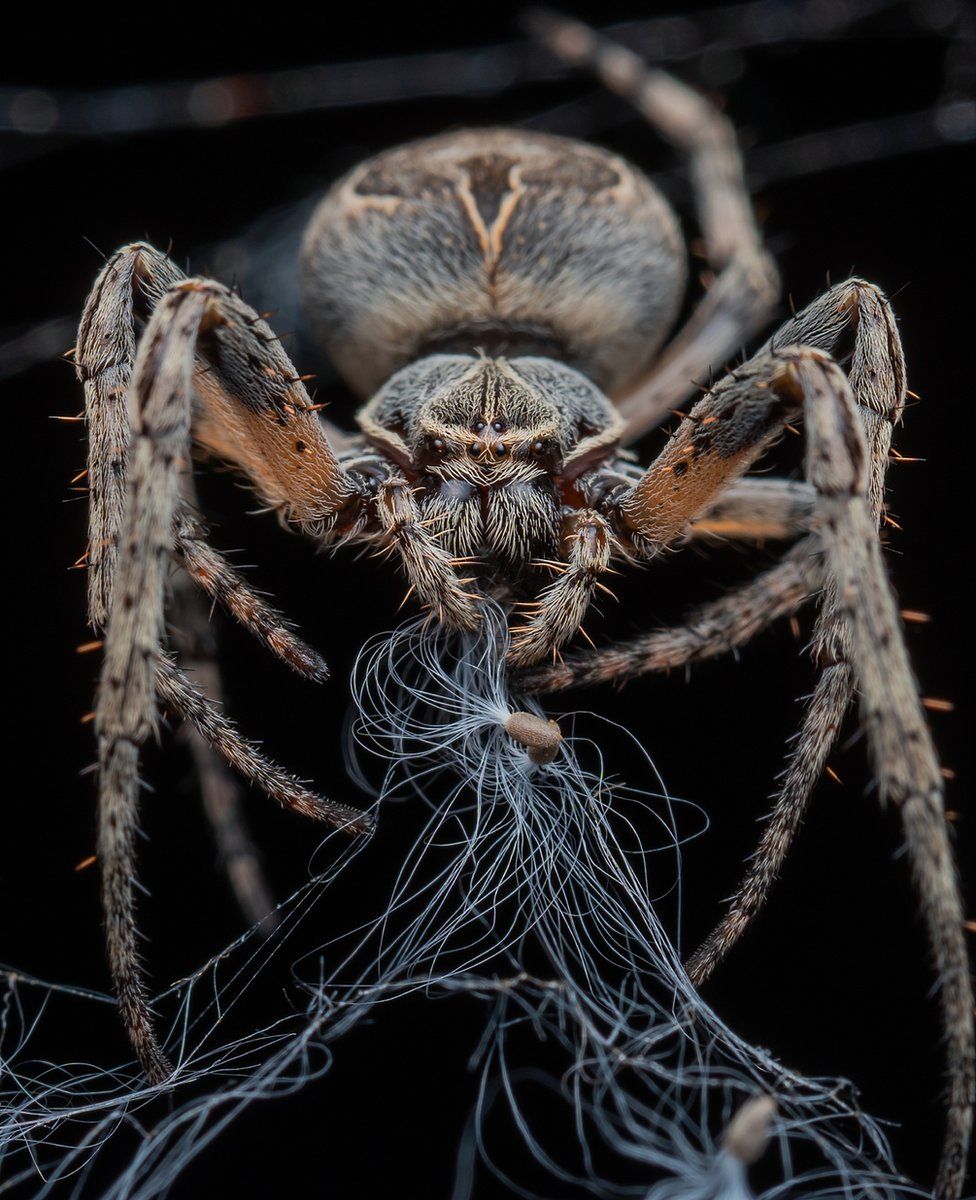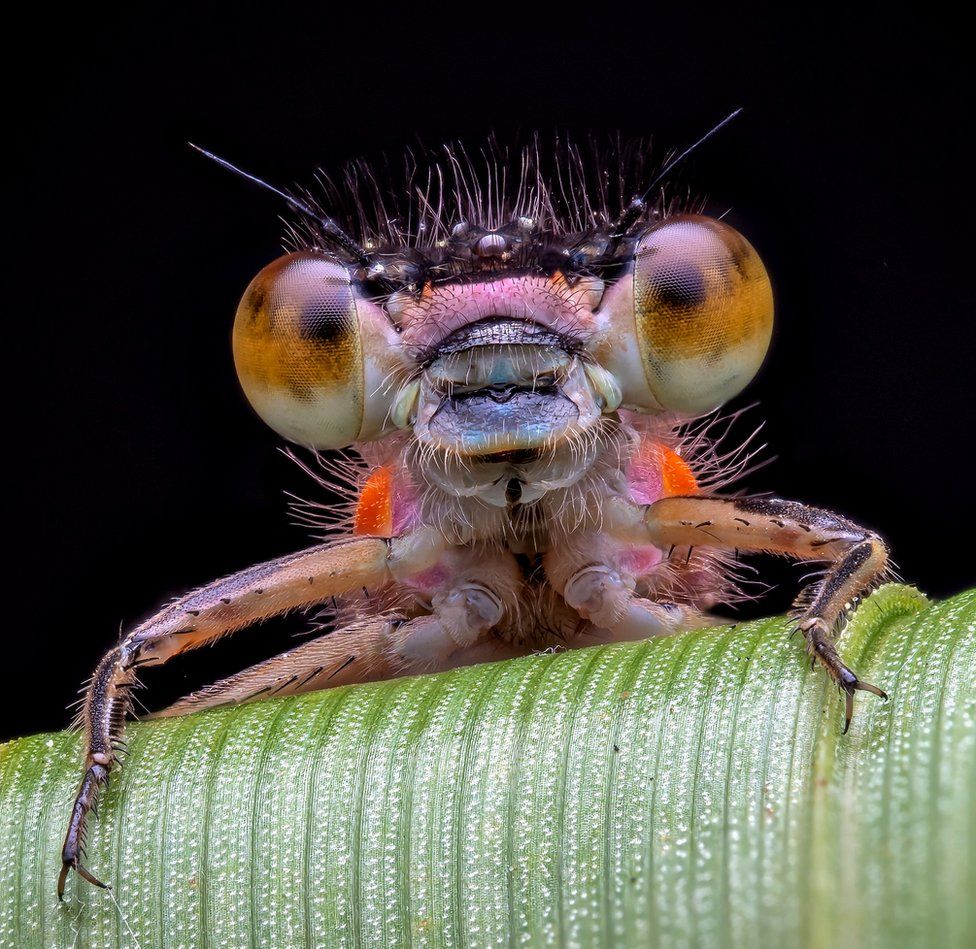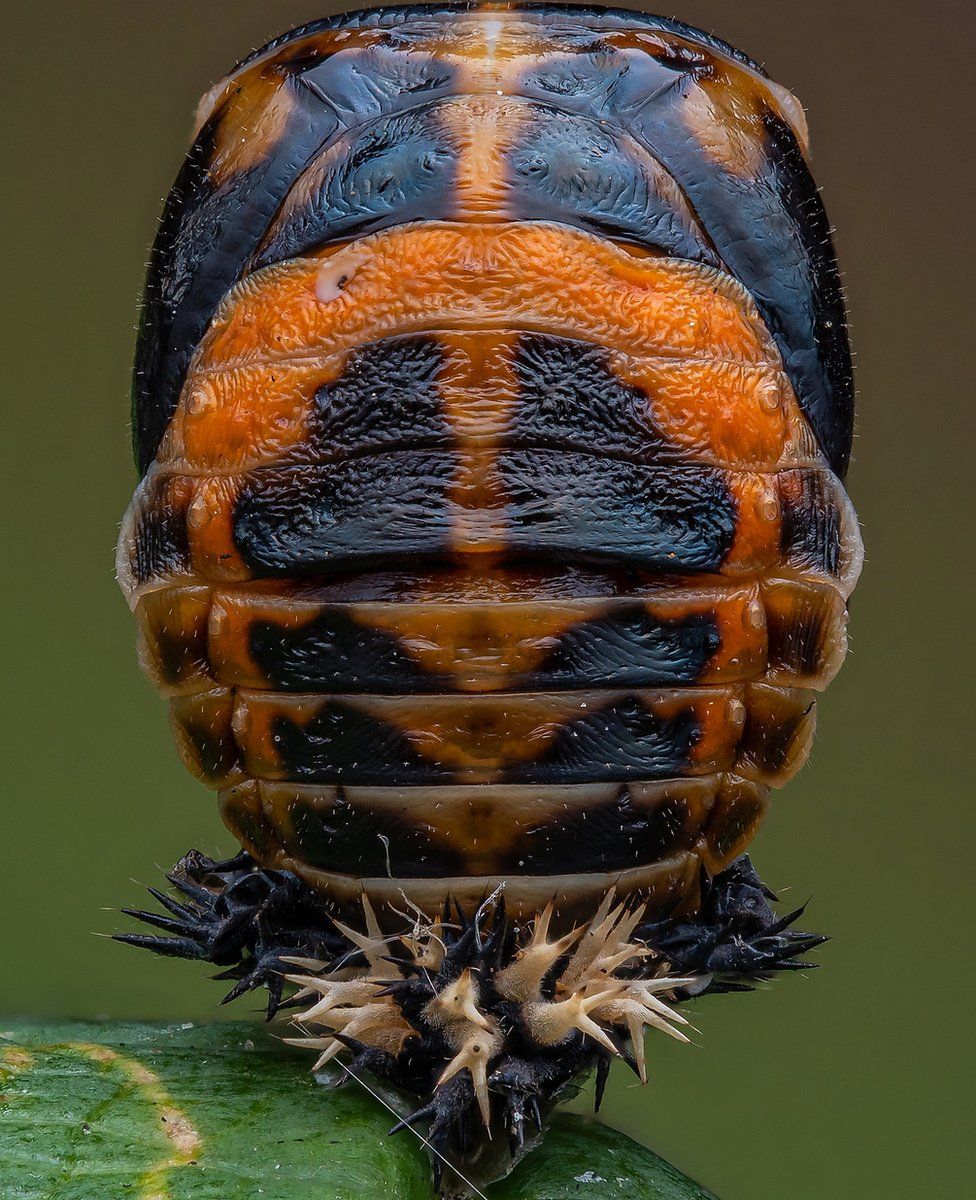Incredible photos of 'wee beasties' in Glasgow park
Image source, David Hamilton
Image caption,
An emerald damselfly - Lestes sponsa, taken at Lambhill stables, Glasgow
By Auryn Cox
BBC Scotland News
Nestled in an unassuming Glasgow Park lies a treasure trove of vibrant colours, intricate details, and tiny creatures waiting to be discovered.
It was during the confinement of the Covid lockdown that David Hamilton found himself captivated by this hidden world.
Now he runs a popular Instagram page "WeeMadBeasties" showcasing macro photography - extreme close-up photos - of all the creepy-crawlies found within Ruchill Park and across Scotland.
Before the restrictions the 43-year-old from Glasgow's west end had been a landscape photographer, but the limitations of lockdown led him down a different path.
"I'd seen an article on someone converting their existing equipment to shoot macro stuff on the cheap," he said.
"I said you know what, why don't I give this a try - there's a park across the road. Once I actually started seeing the sort of colours and the vibrancy of the insects, that was me hooked."
Image source, David Hamilton
Image caption,
This photograph of a hoverfly in the centre of a flower is David's favourite that he has taken in Ruchill Park
Image source, David Hamilton
Image caption,
A tiny 1-2mm red spider mite feeds on an aphid in Ruchill Park
Macro photography typically involves close-up photographs of small subjects, such as bugs and flowers.
David says the people who see his photos are always shocked by what he has found in Scotland.
And he has also impressed other macro photographers around the world with his pictures.
"I didn't realise until I went away and met some of the guys from abroad that what I was producing was was of interest to them," he said.
"There's insects that we have here that they don't. They've got spiders that are the size of your hand, whereas we've got tiny different species that they won't see.
"I've had people reach out from various countries in the world saying they'd like to come over to Ruchill Park."
Image source, David Hamilton
Image caption,
David Hamilton from Glasgow runs the popular "WeeMadBeasties" Instagram page
Image source, David Hamilton
Image caption,
He is best known for his pictures of ladybirds
Image source, David Hamilton
Image caption,
The detail is intricate on this image of Halyzia sedecimguttata, an orange ladybird
Despite his success, David says Scotland can be a hard place for insect macro photography due to the limited number of insects and the country's climate.
And the nation's few insect photographers only have a short window to consistently capture good pictures.
"It didn't used to bother me doing it here until I went to Malaysia," he said.
"I stepped off the plane straight to the hotel, walked outside and looked through the first bush that I came across.
"I couldn't even walk away there was that many things on it. I was like these guys have it easy."
Image source, David Hamilton
Image caption,
This size spotted tiger beetle, from the USA, was David's top bucket list insect shot in Huntley Meadows
Image source, David Hamilton
Image caption,
David took this picture of a Giraffe weevil while in Malaysia
Despite the challenges, David says he probably has photographed and documented more than 1,000 different species from Scotland.
Although he admits they are not always the most co-operative photography subjects.
"It's super difficult. You need to approach them practically at a snails pace.
"They're a very difficult partner to try and work with - they're not going to listen to you," he said.
Image source, David Hamilton
Image caption,
Like most of David's pictures this spider was pictured in Ruchill Park
Image source, David Hamilton
Image caption,
This damselfly at Ruchill Park is having a good stare-off down the lens
As the hobby requires you to get up close to the various different creepy-crawlies it does come with certain risks.
"I was over in France predominantly to take pictures of one tiny species called a Ruby-tailed wasp. They're super small and I had found them and then got too close and got stung," he said.
"I had to run away. I ended up just going to the pub after that because I couldn't move my hand."
Image source, David Hamilton
Image caption,
People are often shocked at the variety of species in Scotland. This ladybird pupae was captured on film at Ruchill Park
David has now started to look further afield to find insects to photograph.
He feels he has mostly covered what Scotland has to offer and has plans to visit Australia next year.
But there is one bug in the highlands that has so far alluded him.
"A Bumblebee Hoverfly is very hard to find. It's super rare and and it's the only place in the whole of the UK that you get that one. I'd love to find it."
https://www.bbc.co.uk/news/uk-scotland-glasgow-west-66468444



